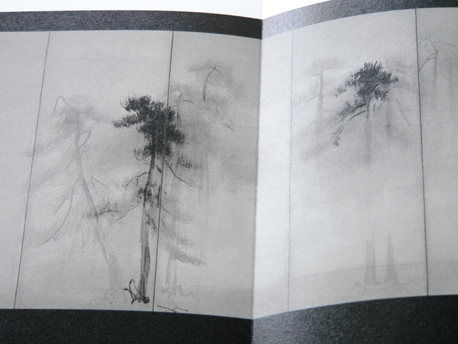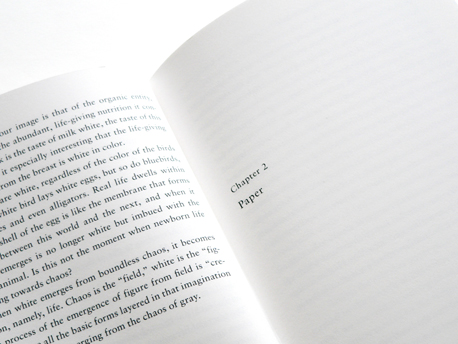White
A small part of the book White is about color:
“it is ‘all colors’ and ‘no colors’ at the same time. This identity as a color that can ‘escape color’ makes white very special. If white is not simply a color, mightn’t we be able to understand it as functioning like a design or expressive concept?”
As a well-known graphic designer and art director at Muji, author Kenya Hara uses a variety of colors all the time. He does not even especially love white. As he has progressed in his career, though, he has slowly moved away from bright, vivid colors and gravitated to subtler, more natural hues. Inspiration was found in items like sand, handmade paper, seeds, rust, milk, cardboard, clouds, and weathered books. Of those, white has had the most profound impact for him.
The Japanese character for white is part of the compound character for emptiness. The connection between those words is a strong one throughout this slim volume.
“The mechanism of communication is activated when we look at an empty vessel, not as a negative state, but in terms of its capability to be filled with something.”
Paper is compared to the principle of itoshiroshi (shiro is Japanese for white), described as an intense purity full of potential. Hara has a strong conviction that simply holding a sheet of paper is like standing before a blank canvas, in that it will trigger the imagination of creative people.
Photography, painting, poetry, architecture and even tea ceremonies serve as solid examples of Hara’s concepts. For instance, he writes that Hasegawa Tohaku’s spare, foggy “Pine Trees” painting provokes our senses with its strong brush strokes and deliberate lack of detail. And, the effective use of white space between the trees actually suggests many more trees beyond what we can see.
“In other words, an unpainted space should not be seen as an information-free area: the foundation of Japanese aesthetics lies in that empty space and a host of meanings have been built upon it. An important level of communication thus exists within the dimension we call ‘white.’”
That empty space in communication is an interesting point. He writes about the power of non-verbal communication—a nod, or eye contact—that can convey so much. He acknowledges that Japanese communication, often leaving much unsaid (like subjects of sentences), can be difficult to understand when compared to the more direct western system. But, he views people reaching a consensus in silence to be a highly refined level of communication. And he reminds us that listening is a crucial part of effective communication.
The book’s design is clean and quiet: almost all text, with black serif type on white paper. Four images, including a 4-page gatefold of the “Pine Trees” painting, are placed together at the back of the book. It would be more effective if the visuals were placed near the text where they are mentioned. A white ribbon marker adds a nice touch.
There is a calm, almost soothing rhythm to the text that feels appropriate. I think there is an over-reliance on quotation marks and on the phrase “in short,” but overall the writing is simple and clear.
Reading this has encouraged me to take a step back and look at white and emptiness in a more thoughtful manner. Perhaps my own design work can benefit from an occasional knowing nod rather than a shout. I am also more aware of the different nuances and levels of white that exist. While I have always been a big fan of white space, I now understand white to be much more than a color.
Designers of all kinds should find something of value in this book. Though it may seem as if Hara, also author of the much heftier Designing Design, is advocating a minimalist style, it runs deeper than that:
“The roots of expressions like … ‘less is more’ are subtly different than those that underlie emptiness. Emptiness does not merely imply simplicity of form, logical sophistication and the like. Rather, emptiness provides a space within which our imaginations can run free, vastly enriching our powers of perception and our mutual comprehension. Emptiness is this potential.”
White is published by Lars Müller Publishers and you can purchase it from Amazon (US|CA|UK|DE).
_ _
About the Reviewer
John Clifford is Creative Director at Think Studio, an award-winning graphic design firm in NYC focusing on brand identity, web sites, collateral, packaging, and books.





